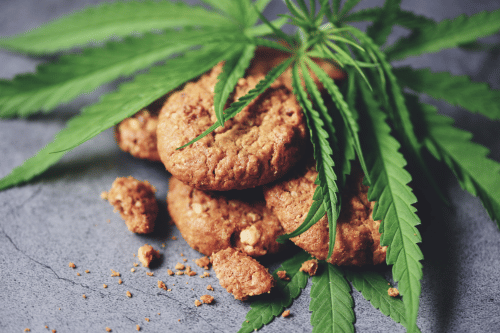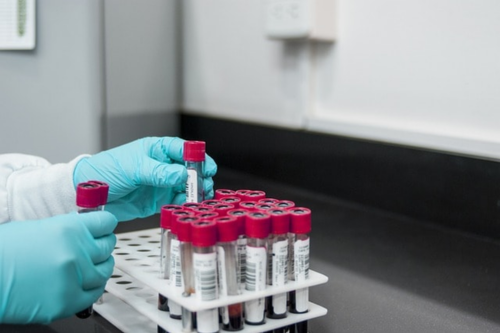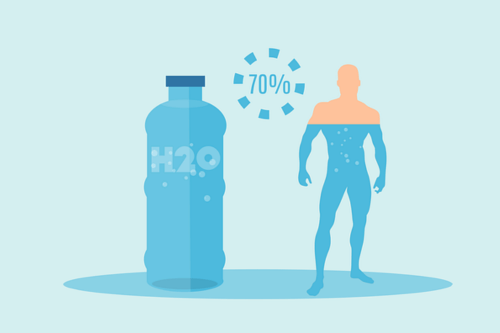

Marijuana edibles have risen in popularity due to their discreetness, variety, and potent effects. However, a common question lingers in the minds of many consumers: do edibles show up in drug tests? With varying drug testing methods and the unique metabolism of edibles, the answer is more complex than a simple yes or no. This comprehensive guide will delve into the intricacies of drug testing for cannabis edibles, smoking cannabis, & exploring the different types of tests, detection windows, and factors that influence how long edibles stay in your system.
To understand how edibles show up in drug tests, it’s crucial to grasp how the body processes cannabis. When you consume an edible, the tetrahydrocannabinol (THC), the psychoactive compound in marijuana, is metabolized by the liver into various metabolites, including THC-COOH. These metabolites are what drug tests typically look for to detect marijuana use.
The question of whether edibles show up on drug tests is more complex than a simple yes or no answer. It depends heavily on the type of drug test being administered, as each method has a different detection window and sensitivity level for marijuana metabolites.
The most prevalent type of drug test, urine tests, primarily detect THC-COOH, the main metabolite of THC, which is produced after the body breaks down the active compound. The detection window for edibles in urine can range from a few days to several weeks, depending on the frequency and amount of consumption.
Occasional users: For those who consume edibles sporadically, THC-COOH may be detectable in urine for 3-10 days after consumption.
Regular users: Individuals who consume edibles more frequently may test positive for up to 30 days or longer.
It’s important to note that factors such as body mass index (BMI), metabolism, and overall health can also influence how long THC metabolites remain in the urine.
Hair follicle tests offer the longest detection window for marijuana use, often extending up to 90 days. This is because THC metabolites become embedded in the hair shaft as it grows, providing a long-term record of cannabis use. While hair tests are less common than urine drug test, they are often used in situations where long-term detection is required, such as in certain employment settings or legal cases.
Blood tests are less frequently used for marijuana detection but can be useful in determining recent use. They typically detect THC for 1-2 days after consumption, but in heavy users, THC may be detectable for up to a week. Blood tests are often used in situations where immediate impairment needs to be assessed, such as in cases of suspected driving under the influence.
Saliva tests, also known as oral fluid tests, are becoming increasingly popular due to their non-invasiveness and quick results. These tests primarily detect THC itself, rather than its metabolites. The detection window for edibles in saliva is generally shorter than a urine test, ranging from 24-72 hours. However, the exact timeframe can vary depending on individual factors and the specific test used.

The duration marijuana edibles stay in your system and the subsequent detection window in drug tests is not a one-size-fits-all scenario. Several factors influence this timeframe, ranging from individual characteristics to consumption patterns and the specific type of edible consumed. Understanding these variables is crucial for anyone concerned about drug testing or managing their cannabis use.
The frequency of consuming edibles plays a significant role in how long THC metabolites linger in the body. Regular or frequent users will generally have a longer detection window than those who indulge only occasionally.
This is because THC metabolites can accumulate in the body over time, particularly in fatty tissues, leading to a higher concentration and a longer elimination period. For chronic users, THC metabolites may be detectable in a urine testfor up to 30 days or even longer, while occasional users may clear THC from their system within a few days to a week.
The amount of THC consumed in edibles directly impacts the duration of its presence in your system. Higher doses of THC naturally take longer for the body to process and eliminate, resulting in a prolonged detection window. This is why it’s crucial to be mindful of the THC content in edibles and start with low doses, especially if you’re concerned about drug testing.
THC is a fat-soluble compound, meaning it is stored in fatty tissues throughout the body. Individuals with a higher body mass index (BMI) tend to have more fat cells, which can act as storage sites for THC metabolites. As a result, individuals with higher BMI may retain THC for a longer duration compared to those with lower BMI.
Each person’s metabolism is unique, and metabolic rate plays a crucial role in how quickly the body breaks down and eliminates THC metabolites. Individuals with faster metabolisms may clear THC from their system more quickly than those with slower metabolisms. This can lead to significant variations in detection times between individuals, even with similar usage patterns.
The specific type of edible consumed can also influence the detection time. Edibles that are high in fat, such as brownies or cookies, may take longer to digest and be absorbed, potentially extending the time THC remains in the system. On the other hand, edibles with a lower fat content, like gummies or beverages, may be metabolized more quickly.
While the factors mentioned above play a significant role, other variables can also influence THC elimination. Staying hydrated can help flush out THC metabolites through urine, while regular exercise can help increase metabolism and promote the breakdown of fat, where THC is stored. Overall health conditions can also affect the body’s ability to process and eliminate THC.

While both cannabis edibles and smoking marijuana involve consuming THC, the primary psychoactive compound in cannabis, there are notable differences in how these methods affect the body and how they are detected in a drug test. Understanding these distinctions can help users make informed decisions about their cannabis consumption, especially concerning drug testing.
One of the most significant differences between edibles and smoked marijuana lies in the onset of effects. When marijuana is smoked or vaped, THC is rapidly absorbed through the lungs and into the bloodstream, quickly reaching the brain and producing an almost immediate psychoactive effect (the “high”). This rapid onset can be appealing for some users seeking quick relief or a fast-acting experience.
However, edibles follow a different path. After consumption, THC is processed through the digestive system, where it is metabolized by the liver. This process takes significantly longer than inhalation, resulting in a delayed onset of effects. Typically, it takes 30 minutes to two hours for the effects of edibles to kick in, and this delay can sometimes lead to overconsumption, as users may mistakenly consume more before feeling the initial dose’s effects.
While the psychoactive effects of edibles may last longer than those of smoked marijuana, the detection window for THC metabolites in urine tests is generally longer for edibles. This is due to the different metabolic pathways involved in the breakdown of THC from edibles.
When THC is ingested through edibles, the liver converts it into 11-hydroxy-THC, a metabolite that is more potent and longer-lasting than the THC produced by smoking. This means that even though the initial effects of edibles may wear off, THC metabolites can linger in the body for a more extended period, making them detectable in urine tests for days or even weeks after consumption.
Another factor that influences the detection time of THC from edibles is its fat solubility. THC is stored in fatty tissues, and individuals with a higher body fat percentage may retain THC for a longer duration compared to those with lower body fat.
Additionally, individual metabolic rates can play a role in how quickly the body processes and eliminates THC metabolites. Those with faster metabolisms may clear THC from their system more quickly than those with slower metabolisms.

While marijuana edibles may be appealing for their potential to alleviate stress, anxiety, or other mental health conditions, it’s important to be aware of the potential risks. Marijuana use has been linked to an increased risk of developing or exacerbating mental health disorders, such as anxiety, depression, and psychosis. If you have a history of mental illness or are concerned about the effects of cannabis on your mental health, it’s crucial to consult with a healthcare professional before using edibles or any other cannabis products.
While marijuana is often considered less addictive than other substances like alcohol or opioids, it can still lead to addiction and dependence. Marijuana use disorder is a recognized condition characterized by problematic cannabis use that interferes with daily life. If you find yourself unable to control your marijuana use, craving edibles, or experiencing withdrawal symptoms when you try to stop, it’s essential to seek professional help.
Edibles, which are food products infused with cannabis, can pose certain risks and dangers if not consumed responsibly. Here are some potential dangers and considerations regarding edibles:
Delayed Onset and Overconsumption: Edibles take longer to take effect compared to smoking or vaping cannabis. This delayed onset can lead individuals to consume more, thinking the initial dose was insufficient, which can result in an overdose.
Potency and Dosing: Edibles can be very potent, and dosing can be difficult to manage. Consuming too much can lead to intense psychoactive effects, including anxiety, paranoia, and impaired motor skills.
Duration of Effects: The effects of edibles last much longer than other forms of cannabis consumption, often several hours. This prolonged duration can be challenging to manage, especially for inexperienced users.
Unintended Ingestion: Edibles can be mistaken for regular food products, posing a risk to children, pets, and unsuspecting adults. Accidental ingestion can lead to severe intoxication and health emergencies.

Whether you’re consuming edibles for recreational or medicinal purposes, responsible use is key to minimizing potential risks and negative consequences. Here are some tips for responsible cannabis use:
Start Low and Go Slow: If you’re new to edibles or trying a new product, start with a low dose and wait at least two hours before consuming more. This will help you gauge your tolerance and avoid overconsumption.
Choose Reputable Brands: Opt for edibles from reputable brands that clearly label their THC content and ingredients. Avoid products from unknown sources, as their potency and purity may be unreliable.
Store Edibles Safely: Keep edibles out of reach of children and pets, as accidental ingestion can be dangerous.
Don’t Mix with Alcohol or Other Drugs: Combining edibles with alcohol or other drugs can increase the risk of adverse reactions and unpredictable effects.
Don’t Drive or Operate Machinery: Never drive or operate heavy machinery while under the influence of edibles.
The question of whether edibles show up in drug tests depends on various factors, including the type of drug test, frequency of use, dosage, and individual metabolism. While edibles may offer a discreet and enjoyable way to consume cannabis, it’s important to be aware of their potential risks and to practice responsible consumption.
If you’re concerned about passing a drug test or have questions about the effects of edibles, consult with a healthcare professional or cannabis specialist to discuss your options and make informed decisions about your health and well-being.
At Sullivan Recovery, as an in-network provider we work with most insurance plans, such as:
And More
If you or a loved one are struggling with mental health challenges or substance abuse, reach out to Sullivan Recovery today. Our team of compassionate professionals is here to support your journey towards lasting well-being. Give us a call at 949-836-7180.
Yes, edibles can show up in drug tests. The detection depends on the type of test and various factors such as frequency of use, dosage, and individual metabolism.
The duration THC from edibles stays in your system varies. For occasional users, it can be detectable for 3-10 days, while regular users may test positive for up to 30 days or longer.
Marijuana edibles can be detected by various drug tests, including urine tests, hair follicle tests, blood tests, and saliva tests, each with different detection windows.
Yes, factors like metabolism and body fat percentage can influence how long THC metabolites from edibles remain detectable in your system, affecting drug test results.